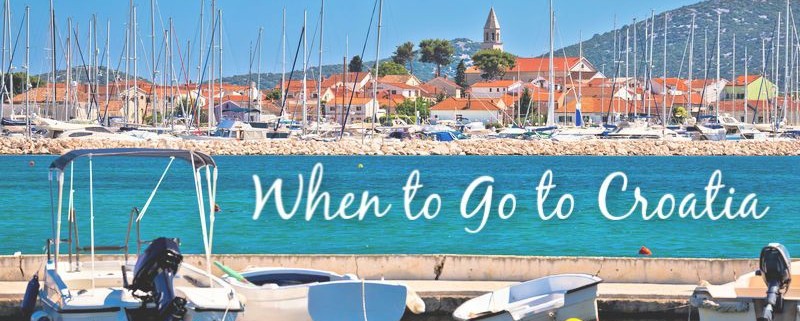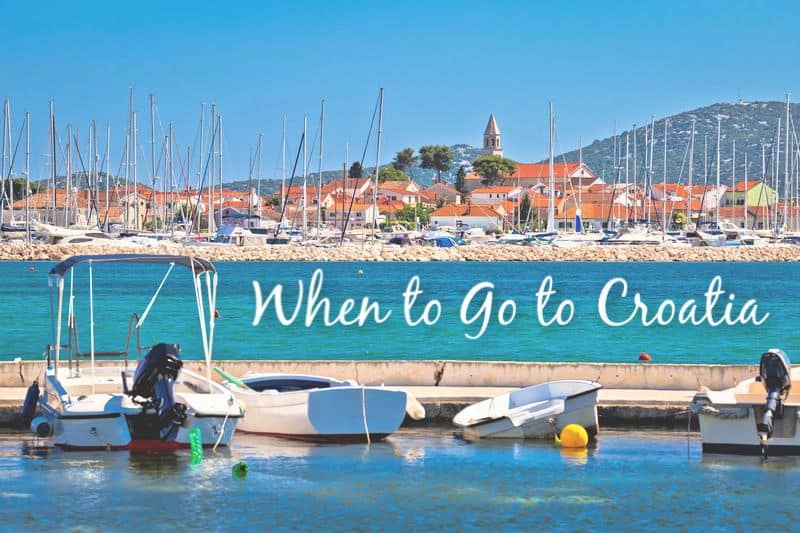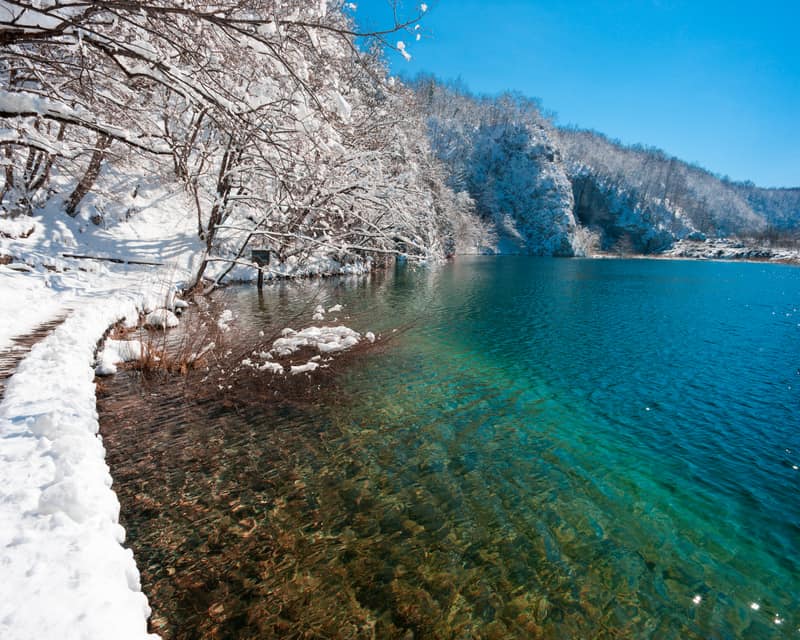
The weather will most likely be a pretty big deciding factor if you’re wondering when to go to Croatia.
As such, almost anytime between May and October is suitable for a holiday. Temperatures are already relatively pleasant in May – coastal temperatures may be in the low 20s °C/low 70s °F and there’s a good deal of sunshine. Swimming in the sea should be possible too – although it may still be a little on the chilly side, especially in the early part of the month! Understandably, the further south you go, the warmer the sea will be – so if you’re very keen for some sea swimming, consider holidaying in the south Dalmatia (e.g. Dubrovnik) area.

Likewise, September will still see very good weather and the sea (having heated up all summer) will definitely still be warm enough for swimming. This pleasant weather often stretches out into October.
The other summer months – June, July and August – are of course the height of summer with near-perfect weather. In some cases, temperatures may even be a little too hot, but as long as you’re prepared for plenty of dips in the sea you’ll be fine.
The main issue with these months, however, is that they tend to be very crowded. Not only will you find large numbers of holidaymakers flying in from all sorts of far-flung places, you’ll also encounter many Europeans who have literally packed up their cars with all their holiday essentials for a few weeks on the Adriatic. July and August tend to the be vacation months for most continental Europeans (which you may have noticed if you’ve been in any large cities during these months) as they “shut up shop” and head to the seaside. Accommodation, cafes, restaurants, beaches and roads on the Croatian coastline can all get very full.
Note that prices for rooms and meals will also rise during these months so expect things to be a bit more expensive than at other times of year (and vice versa, of course – so keep this in mind too).
On the other hand, Croatia does still tend to operate seasonal tourism, meaning that outside the popular months, some establishments (hotels, restaurants) may be closed. Smaller resorts and islands may be pretty empty as there are hardly any visitors so, although you may have a peaceful holiday, you may not have all of your resort’s facilities and amenities at your disposal. However, the country is trying to “expand” its season so you will find that more and more hotels and amenities stay open longer during the year.
Transport and travel
This may also be a deciding factor for you. Many flights to Croatia operate only during “summer” (i.e. beginning of April to end-September, or mid-October), though some routes operate year-round. (See our Flights to Croatia page for timetable details.)
More importantly, a number of ferry routes are cut down or cut completely during off-season. Jadrolinija (the largest ferry operator in Croatia) runs its high season from 1st June to 30th September each year. It still, however, runs a number of its most popular routes such as services to and from Italy (Ancona) even in low season. Other ferry operators also run reduced services during off season. Local routes (i.e. from the mainland to the islands and vice versa) obviously operate year-round.
The coastal catamaran from Split to Dubrovnik (stopping on Brac, Hvar, Korcula and Mljet) from Kapetan Luka runs from mid April (daily) to the end of October (three times a week in the final week). The other two coastal catamaran routes run from the end of May/beginning of June to the end of September/early October.
Bus and train services operate year round. (Croats have to travel around too!)
Is it a bad idea to visit Croatia in winter or out of season?
No, not at all! In fact, winter’s a great time to visit. If you visit in December, almost all the main cities and towns will have Christmas celebrations of some sort. As well as decorations, fairs, ice skating rinks and more, there are usually relatively big outdoor celebrations (live music and fireworks) to welcome the New Year.
Zagreb, in particular, offers a number of Christmas celebrations – see Advent in Zagreb for more. The city was also the winner of European Best Destinations’ Best Christmas Market in 2016, 2017 and 2018! Split and Dubrovnik are also very suitable winter destinations, and both offer up plenty of events even during the off-season.
Winter will also bring snowy conditions to many parts of the country (not normally to southern parts of the coast, but it’s certainly possible!). Visiting the Plitvice Lakes during winter takes on a magical dimension, with snow covered scenery and frozen lakes and waterfalls.

Most ‘resorts’ (that are strongly aimed at summer holidaymakers) and islands will be pretty quiet in winter, it has to be said. However, they are still interesting places to visit (offering up quite a unique opportunity, in fact) as long as you’re prepared for the fact that they definitely won’t be bustling. Many restaurants, bars and so on will be closed, although don’t worry, you’ll always find somewhere to eat.
Weather-wise, some of the interior can get very snowy and cold indeed during winter. The coast normally doesn’t tend to get too cold (temperatures between 0 – 10C/32 – 50F) but it can be quite rainy and/or blustery.
All in all, do consider a visit to Croatia during winter. But just wrap up warm!
